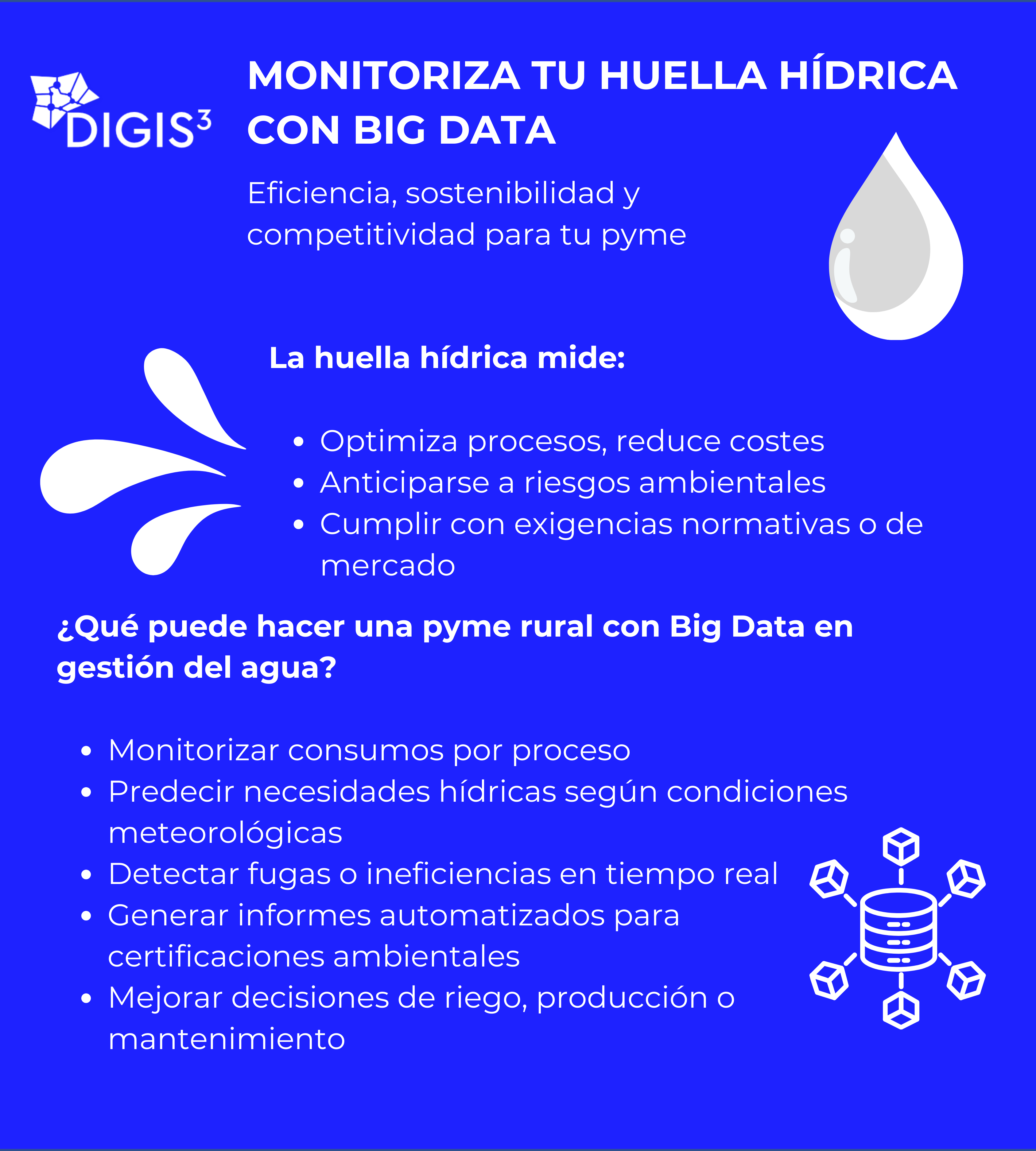Efficient water use has become a priority for companies aiming to be more competitive, responsible, and sustainable. This challenge is especially important in sectors such as agribusiness or tourism, where water is a key resource. Today, digitalization and data analysis offer a powerful way to tackle this challenge: monitoring your water footprint with Big Data.
The water footprint measures the volume of water used in production processes, directly or indirectly. Proper management allows for process optimization, cost reduction, anticipation of environmental risks, and compliance with regulatory or market demands. Big Data enables the capture, processing, and analysis of water data in real time, detecting patterns, anomalies, and improvement opportunities that would be impossible to identify manually.
What Can an SME Do with Big Data in Water Management?
Small and medium-sized enterprises have a unique opportunity to transform their water management through the use of Big Data. This technology enables more informed decision-making, process automation, and better adaptation to changing environmental conditions. From smart irrigation to leak detection, data analysis turns water management into a competitive advantage. Some benefits include:
- Monitoring consumption by process, machine, or crop.
- Predicting water needs based on weather conditions.
- Detecting leaks or inefficiencies in real time.
- Generating automated reports for environmental certifications.
- Improving decisions related to irrigation, production, or maintenance.
Use Cases in Castilla y León
In Castilla y León, where sectors such as winemaking, agri-food, and tourism are closely linked to water use, Big Data is already making a difference. Local companies are applying innovative solutions to optimize resources, improve sustainability, and meet environmental standards, demonstrating that technology can adapt to regional needs. Some use cases include:
- Wineries optimizing vineyard irrigation based on moisture sensors and weather forecasts.
- Agri-food plants monitoring consumption by production line.
- Rural hotels measuring water impact per stay or service.
- Cooperatives sharing data for collective water management.

Useful Technological Solutions
Implementing technological tools is key to efficient water management. IoT sensors, cloud-based analytics platforms, and artificial intelligence algorithms allow for real-time data collection and processing, providing a comprehensive view of water consumption. These solutions are accessible and scalable, making them ideal for SMEs seeking to improve sustainability without large investments. Some technologies include:
- IoT sensors for flow, moisture, and pressure.
- Cloud analytics platforms (such as Power BI, Grafana, ThingSpeak).
- AI-based prediction algorithms (water-related machine learning).
- APIs for meteorological and hydrological data.
At DIGIS3, we help you implement these solutions with a personalized approach: we offer a free digital assessment, guide you through available tools, and help you identify funding sources.